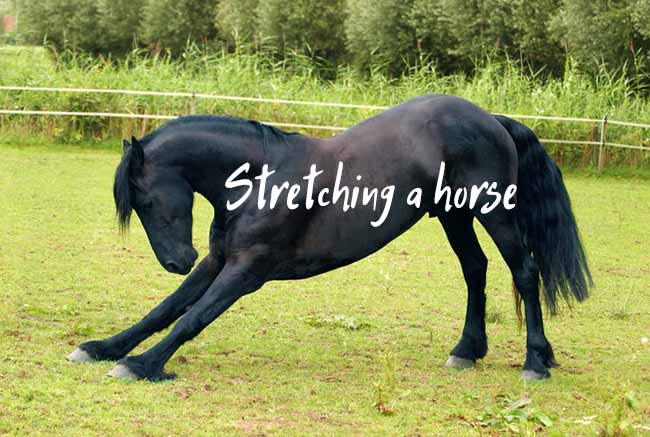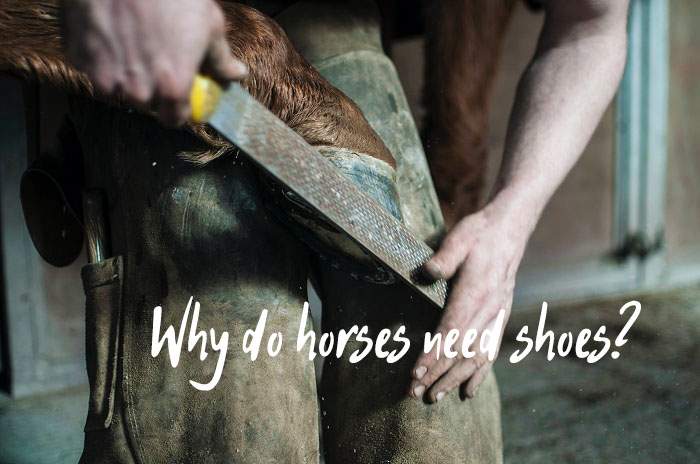Improving Horse Fitness – Everything You Need to Know

Horses might seem like they’re unwavering and tireless. After all, that’s how they are portrayed in movies and TV shows. This couldn’t be further from the truth, as a horse can lose its fitness and quickness relatively easily if the owner doesn’t ensure proper nutrition and frequent exercise.
You can increase a horse’s fitness in a number of ways, depending on the horse breed, the specific issues it faces, and the amount of space that you have available. Moreover, you need to take into account if you’re training your horse for a specific event, or if you simply want it to be in shape for farm work or leisure activities.
Weather is an important factor as well. In areas where it’s sunny all year round, a horse can be trained constantly and is able to maintain its resilience throughout its younger years. In cold regions, however, a horse might be confined to a stable for longer periods, which could result in a loss of fitness. The owner needs to be creative and resourceful in this situation.
Fortunately, I’m here to provide some useful pointers. In this article, I’m going to walk you through several proven ways to increase your horse’s fitness levels. These training regimens are suitable for horses of all types and breeds. However, you might want to fine-tune each activity according to your training space, your horse’s age, and fitness level.
1. Interval Training.

Interval training is great if your horse is already doing some work on a daily basis but you need it to become stronger for an upcoming event. Basically, you’ll want to ramp up the intensity of your training routine without relying too much on long, low-intensity sessions.
Not only is interval training a time-saver, but it also boosts your horse’s muscle tone and lung capacity in a relatively short time span. I repeat, this training routine is best-suited for horses that are already in moderate to good fitness.
During interval training, you’ll rely on short-duration rides at canter followed by a period of rest at walking speeds. Stat off with longer rest periods and shorten these down as you progress throughout the routine. By the end of the training regimen, the canter sessions should be longer than the resting ones.
Generally speaking, five minutes of canter followed by three minutes of walk constitutes a solid interval training system. You should perform these activities twice in quick succession, but you don’t need to do them more than once a week.
You shouldn’t rely on interval training alone in order to increase your horse’s fitness. Instead, use it as part of a general regime in which you can include jumping, schooling, and hacking. More on these below.
2. Hacking (Trail Riding).

Naturally, just like humans, horses will build up endurance if they go for long walks or jogs. Trail riding represents a perfect way to boost your horse’s fitness, especially since you won’t have to drill them in school.
Take your horse on a long hack through a forest road for optimum performance. The uneven terrain and the sloping differences will force the horse to adapt and overcome obstacles. Therefore, trail riding is a great exercise for the body but also for the mind. Increasing physical fitness is incredibly important, but mental fitness must also receive training at the same time.
A horse needs to know its strength in order to trust itself. It needs to have confidence, and overcoming obstacles found naturally in the wild is a perfect way to achieve it. Depending on your horse’s fitness levels, you will generally practice trail riding at a walk with some trot, or at trot and canter.
As your horse becomes stronger and more endurant, it will be able to go through the same course faster and without tiring as much. It’s ideal to practice hacking on the same course each week, or at least on a trail that has the same length in order to be able to measure your horse’s progress.
The goal is to go through the trail with speed and efficiency. If your horse is not up to it at first, don’t worry. Even an hour or 50 minutes of trail riding will do great things for its fitness levels, provided you perform the exercises on a regular basis.
3. Jumping and Gymnastics.

If the amount of space that you have available for horse training is limited, then you might want to consider jumping and some gymnastics work. The horse doesn’t need to jump very high in order to achieve a fitness increase. Furthermore, if you keep your jumps low, you will also avoid strain while minimizing the risk of injury. You know what else can minimize the risk of injury? Properly stretching the horse.
Some of you might not know this, but riding a horse while it’s jumping can be unnerving and stressful. It’s not a very comfortable ride, and many things can go wrong with these particular exercises. If you want to learn more about the jumping capabilities of horses, I previously covered the topic in length. Go give it a read if you’re interested.
Therefore, if you’re nervous about riding your horse through the jumping process, you can always ride it during the pole work and then let the horse do some free jumping as part of its gymnastics routine. You can start off with regular poles placed on the ground, and you can gradually place them higher as the horse progresses.
These exercises will help develop multiple muscle groups, and they will force the horse to think fast and make quick decisions.
4. Lunging (Long Reining).

The main advantage of lunging as a training regimen for horses is that you’re not riding your horse as you perform the exercises. This means that the muscles that go under the saddle have a chance to develop properly. However, it’s worth noting that you shouldn’t overdo this exercise, no matter how tempting it might feel.
Sure, leading the horse around might seem like fun for both of you but, long reining should only be practiced about two times per week in most cases. That’s because long reining can be quite strenuous for horses, particularly if they’re young or they’re just starting to exercise after a period of long rest.
Ease into it at first and try to lead the horse around in large circles. After a while, you’ll be able to practice lateral movements and canter. Keep an eye on the horse’s progress and don’t rush things – that’s key. If the horse is particularly out of shape, it’s never a bad idea to implement lots of walk breaks. Usually, a lunging routine shouldn’t take more than 20 to 30 minutes.
5. Use the hills to build a horse’s fitness.

If you’re fortunate enough to live in an area with hillsides and slopes, letting your horse tackle the different inclinations is a fantastic way to build fitness. A horse going uphill will build considerably more fitness when compared to one that only walks on flat ground. At the same time, going downhill will work out various areas of the body that would otherwise remain neglected.
For the best results, try to canter uphill and walk downhill. This will dramatically improve the horse’s cardiovascular fitness over time. Sometimes, the horse will become a bit too excited to finish the run and will increase its speed when going downhill. It’s important for the horse to listen to your instructions.
Going fast while downhill might actually be easier when compared to a controlled walk down. The walking pace will build more fitness as the horse will need to control each step carefully. Going downhill will work different muscles, and while the cardiovascular benefits are less obvious, these exercises will help with balance and control.
For muscle tone improvements, you can walk and trot up the hill with variations in pace. Variations are important, as the muscle fibers will eventually get used to the same amount of stress in the same places. You need to keep the body guessing in order to see the best results.
6. Swimming.

Contrary to some beliefs, horses are actually incredibly good swimmers, and they can benefit greatly from regular swimming sessions. The trick is to do these sessions correctly and to make sure that your horse is introduced to the water in a kind, gradual and controlled way. Horses that have been around water from a very young age are much more likely to adapt quickly to this kind of training routine.
Some of the best-known benefits of swimming for horses include improved cardiovascular and respiratory parameters, great mental stimulation, enhanced glucose-insulin metabolism, improved injury recovery, and a dramatic decrease in chances of musculoskeletal injuries.
What if the horse was previously injured.
If the fitness routine is linked to injury recovery, it’s very important to consult a veterinarian in order to make sure that the horse is ready for the routine. Moreover, make sure to come up with a great exercise plan that moves up slowly as the horse recovers. You will need to stick to the regime as well.
If you think that you won’t be able to put in the time, make sure to find someone that can fill in your gaps for you. At the very beginning, a horse recovering from an injury might not be able to handle much more than a slow walk on a lead line. That’s fine, as long as it is moving properly and there’s no discomfort.
Is lunging better than riding for fitness training?
You’ll have to decide for yourself if you’ll want to lead your horse or to ride it during exercise. My bet is that you’ll probably end up doing both. However, lunging is a better option if you’re about to work with a weaker horse, or with one that’s not yet trained. While lunging, the horse will become accustomed to your body language, and it will get used to your vocal commands.
If the horse is only out of shape but is accustomed to riding, you can perform riding-based routines right away. It depends on your own experience and confidence levels as well. In general, the horse might benefit from your added weight if you’re looking to build muscle. For basic light training, though, lunging might be a better choice.
Walking every day.
Even if you’re not yet committed to a complete training routine, make sure to walk your horse every day in order to bond with it and prepare for potential fitness training down the line. These walking sessions usually last between 10 to 20 minutes, and they involve straightforward walks, turning in circles, and making figure eights.
This is also a good way to check if the horse is responsive or willing to follow your commands. If it won’t listen to you during a simple walk, you can forget about more complex training. Focus on training the horse, and establish a relationship with it first. Make changes in the walking patterns often so that the horse won’t just get used to a routine. It needs to follow your directions even when you make a sudden change – especially then, even.
Final words.
Improving your horse’s fitness can be a difficult process, but that doesn’t mean that it needs to be unpleasant. Depending on your horse’s fitness levels, you might need to put more or less work into these exercises. In any case, a horse should exercise regularly in order to keep its muscle tone and cardiovascular health. A sedentary horse is most likely unhappy and much more vulnerable to illness.
Do you train your horses every week? Let me know about your own routines and practices!






